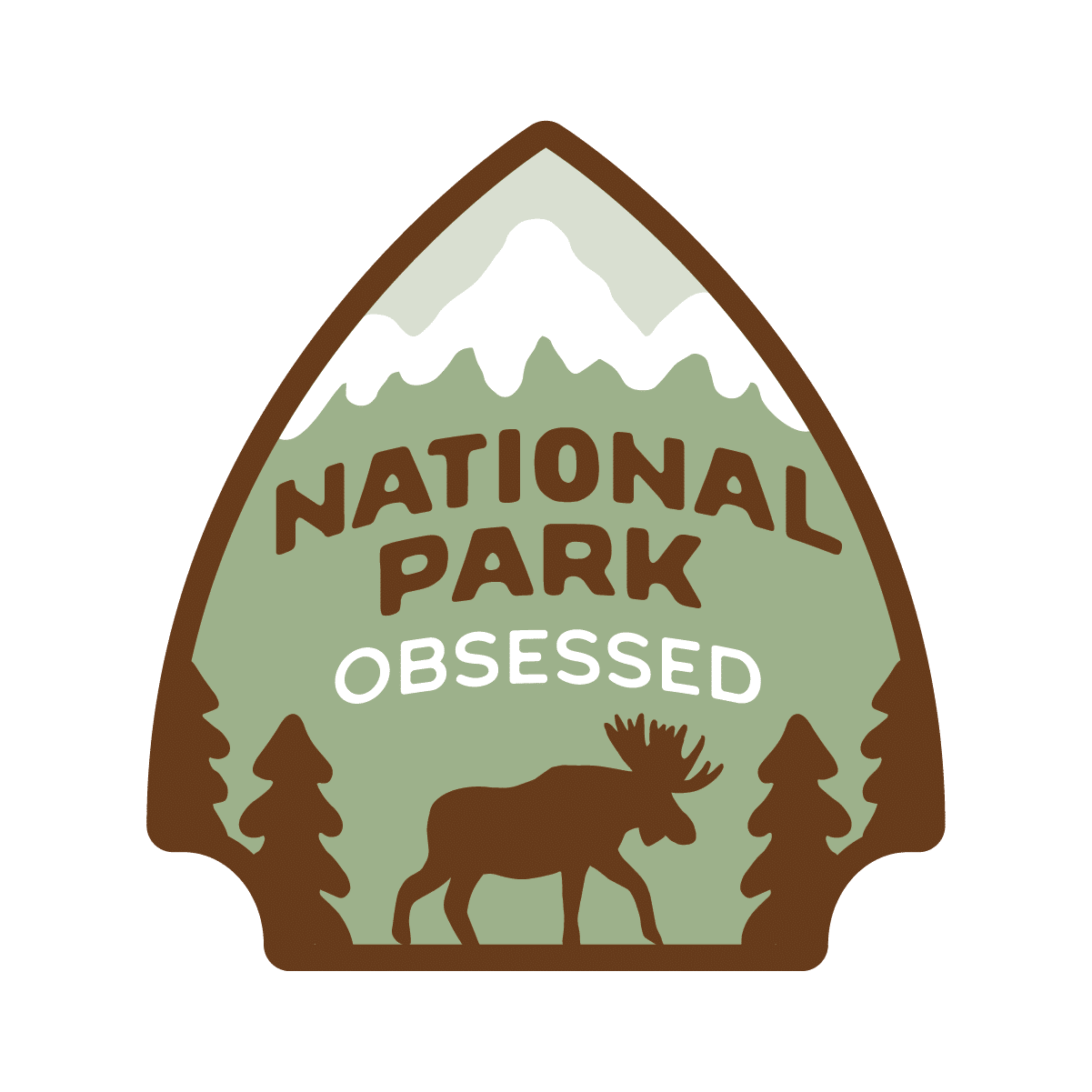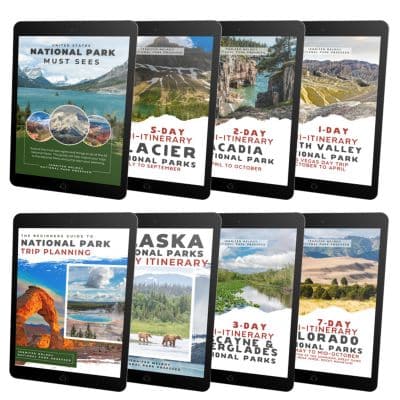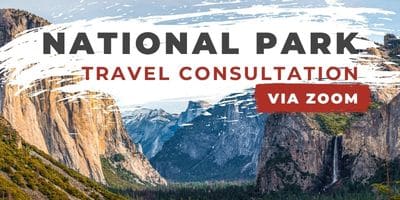
Should Chiricahua National Monument be a National Park?
- Jennifer Melroy
- Last Modified August 19, 2024
- First Published on August 19, 2024
Earlier this year I did a long road trip through Death Valley, Arizona, and New Mexico. Along the way, I stopped at Chiricahua National Monument. I specifically included Chiricahua on this road trip because of the movement to make Chiricahua National Monument a National Park.
So, let’s get into whether Chiricahua National Monument should be a National Park.
Table of Contents
This post may contain affiliate links, meaning if you book or buy something through one of these links, I may earn a small commission at no extra cost to you! Read the full disclosure policy here.
NATIONAL PARK TRIP PLANNING RESOURCES
Here are some of the best resources to plan your national park travels. If you are new to the parks, National Park Travel Planning Bundle is the perfect resource to help you plan your dream trip, get it planned, and reduce the stress of planning your National Park trip.
- National Park Itineraries: Let someone else do the planning with our pre-planned National Park Itineraries for less than $6 a day.
- Get Free Entrance: The America the Beautiful National Park Pass is an $80 pass that is valid for 12 months. The pass provides free entrance to the National Parks and more than 2,000+ other federal lands.
- Make sure you have a National Park Passport: Here is my favorite National Park Passport.
- For Flights: Use Skyscanner to get the best prices on your flights.
- For Rental Vehicles: Browse for deals on rental cars at RentalCars.com. Or rent an RV or campervan with RVshare or Outdoorsy.
- For Hotels: I book my hotels on Hotels.com and Booking.com.
- For Vacation Rentals: I love VRBO for my vacation rentals.
- For Camping: If making camping reservations in the parks, I use Recreation.gov. For private campgrounds, I use Campspot.
- Buy Outdoor Gear: I get most of my outdoor gear at REI.
- Get Trail Maps on your phone with
- Looking for National Park Gift Ideas: Here are the 55+ Best National Park Gifts Ideas.
- Don’t forget travel insurance: I get my travel insurance through World Nomads.
My Quick Thoughts on Chiricahua National Monument Becoming a National Park
I’m just going to start this article with my opinion and then go into detail about how Chiricahua compares to other parks and the current situation in Chiricahua.
Chiricahua has really challenged my stance that the National Park Service doesn’t need any more National Parks right now. It’s truly an amazing place, and if I didn’t have the knowledge I do of the overall funding, staffing, and visitor management challenges of the National Park Service, I’d be totally on the Chirichaua National Park bandwagon.
Sadly, I know about those funding, staffing, and visitor management challenges, and adding another National Park compounds those problems. So, I’m 100% against Chiricahua becoming a National Park at this time.
Chiricahua National Monument Basics
Chiricahua National Monument is located in southeast Arizona near the New Mexico border. The monument is about 2 hours from Tuscon, Arizona. This twelve thousand acre national monument is often called “The Wonderland of Rocks” due to its hoodoos, balancing rocks, and the famous rhyolite rock pinnacles.
- Region: Southwest
- State: Arizona
- Park Size: 12,025 acres (48.66 km2)
- Location: Cochise County
- Closest Cities: Willcox, Arizona
- Busy Season: February to April
- Visitation: 62,582 (2023)
Chiricahua National Monument was established on April 18, 1924, with 85% of the park being protected wilderness. On April 30, 2021, Chiricahua became the 104th International Dark Sky Park. This designation is only held by 49 other units in the National Park System.

Current Situation of Chiricahua National Monument
When there is talk of a new National Park, my first question is, “Is this site ready to be a National Park?” I want to know if the park’s existing infrastructure and staffing can handle the increase in visitation. Sadly, this is never discussed, and when questioned, locals and politicians supporting the measure almost always say that it is a National Park Service issue and skirt around it.
When the Chiricahua National Park Act was first introduced via Twitter and Facebook, I asked several congressional sponsors about this, but no one responded.
I can tell you that the National Park Service has been considering how to manage visitation increases at Chiicahua. I was digging around on the Chiricahua’s website when I found a three-part “Draft Environmental Impact Statement General Management Plan” (GMP). The GMP evaluates the current situation** and provides alternative plans to better manage the current situation and plan for the future.
**Upon reading this report, I noticed a lack of publication data, but based on the data cited, the report was likely produced sometime in 1998 or 1999. So, the report is 20ish years old at this point, but the issues raised are as valid today as they were when this report was created.
So, let’s get into the current situation in the monument.
Chiricahua Current Visitation
In 2023, Chiricahua had 62,582 recreational visitors. Over the last ten years, the monument’s visitation has ranged from 44,000 to 63,000 visitors. Over the last 5 years, visitation has been 60,000 visitors plus (excluding 2020 and 2021, which probably saw a drop due to COVID-19).
It should be noted that yearly visitation has dropped off the peak in the 1990s. In the GMP, NPS expected visitation to increase dramatically due to the opening of Kartchner Caverns State Park in the Fall of 1999. This hasn’t been the case. I have to wonder if Kartchner’s opening had the opposite effect.
For this discussion, I assume that there are 2.5 visitors per vehicle. The National Park Service could not provide any data on this. But, the Pew Research Center says the average US household size is 2.58 people, so I think 2.5 visitors per vehicle is a good estimate.
Park visitation data was obtained from the National Park Service Visitor Use Statistics website. All visitation data averages are taken by averaging visitation from 2014 to 2023.
| Month | Average Monthly Visitation (2023-2014) | Average Visitors Per Day | Average Vehicles Per Day |
|---|---|---|---|
| January | 4,294 | 139 | 55 |
| February | 6,314 | 225 | 90 |
| March | 9,914 | 320 | 128 |
| April | 7,125 | 237 | 95 |
| May | 4,605 | 149 | 59 |
| June | 2,620 | 87 | 35 |
| July | 2,575 | 83 | 33 |
| August | 2,286 | 74 | 29 |
| September | 2,920 | 97 | 39 |
| October | 4,652 | 150 | 60 |
| November | 4,678 | 156 | 62 |
| December | 4,008 | 129 | 52 |
As the table shows, the monument is busiest from February to April, with the low season from June to September.
Chiricahua Infrastructure
For this discussion, we will examine how Chiricahua fares with its current visitation and infrastructure during the peak month which is March. Over the last ten years, Chiricahua has received 320 visitors daily. Using the assumption of 2.5 visitors per vehicle, we get 128 vehicles daily. Remember, this is just the daily average, and there may be days with significantly more visitors than this average. This also looks at the busiest case.
Existing Infrastructure in Chiricahua
Visitor Center and Park Headquarters
The park has one small historic visitor center that, based on the current list of proposed deferred maintenance and repair projects, needs rehabilitation to become code-compliant and energy-efficient. The gift shop and information desk are one. There is room for 2-3 people to stand and check out people and provide information. The interpretive exhibits are over 50 years old and need updating and replacing.
My visit to Chiricahua was on a weekday in March. I was in the visitor center around 11 a.m., and the parking lot was full and very crowded. I found a pull-off stop about 40 feet away on the main road. It was a short wait to check out, get my stickers, and speak with a ranger. The biggest annoyance was that no matter where I stood in line, I was in someone’s way.
Another issue is that the visitor center doubles as the park headquarters. There isn’t space for a library, archives, collection storage, or herbarium. The current GMP notes that there is limited office space with climatic control, and it can accommodate eight employees. The other options for office space within the monument are in dilapidated historic structures that lack climate control and are infested with rodents. There are no meeting spaces for more than five people.
The GMP discusses expanding the visitor center, but the problem is even if they expand, there isn’t space to expand the parking lot without clear-cutting the nearby area.
Roads and Parking Lots
Most of the monument’s roads were built in the 1930s. They are narrow in width, have no shoulders, and have a limited number of turn-offs to allow for passing.
There are roughly 140 parking spaces at the monument’s trailheads and parking lots***. On the surface, there were more cars than parking spaces in March. But we have to account for visitor behavior. Most places have two main types of visitors: sightseers and hikers.
In Chiricahua, sightseers want to stop and enjoy the scenic views along the monument’s road. They will visit both Massai Point and Echo Canyon and take a short hike at each, while hikers typically head to Echo Canyon or Massai Point to park and head off on their hike.
The GMP states that “The parking problem is serious, but not yet acute.” I agree with that assessment, and we have to remember that the GMP was developed during a time when visitation was significantly higher.
The Visitor Center has 19 parking spaces, including 2 ADA spaces. There is no larger vehicle parking available, but there is space for 2-3 additional vehicles along the roadway nearby. The biggest problem with this lot is a dead end, so you must back up and turn around a tight space between the two rows of parking spaces.
This is the most likely place for parking issues since most visitors will stop to get information, trail status updates, and passport stamps. Most people’s visits will take under 30 minutes, but there is nowhere to sit and wait for parking spaces to become available that doesn’t impede other traffic.
The Natural Bridge trailhead has four parking spaces and is probably full most of the day. This hike takes about 3 hours to complete on average, so there is probably time for a morning and afternoon group.
The Sugarloaf trailhead has 18 parking spaces with 2 ADA parking spaces. On average, the Sugarloaf Mountain trail takes about an hour to hike, so there will be regular turnover in this lot after the morning rush.
Echo Canyon Picnic Area and Trailhead has 20 parking spaces, including 2 ADA spaces. There is also space for 10-15 additional vehicles along the roadway nearby. This parking lot shares a trail system with Massai Point and offers a better scenic hike to access the trail system. Trails in this area range from 3.6 miles to 8 miles.
The GMP reports that hikers typically spend 3 to 5 hours parked while sightseers spend about an hour if parking is available. This data might be 20 years old but I’d imagine its still accurate. I expect that visitors who arrive during the mid-morning have the most issues finding a parking space. There is probably a decent amount of turnover in the afternoon as the morning hikers return from their hikes and head out.
Massai Point Picnic Area and Trailhead has 23 parking spaces, including 3 ADA parking spaces. This parking lot shares trails with Echo Canyon, but it also has a short 0.5-mile walk for people who want to see the rocks but don’t want a longer hike.
The GMP reports that sightseers typically spend 30 minutes and is the backup parking spot for hikers when the parking at Echo Canyon is full. Hikers typically stay 3 to 5 hours. Given the shorter nature of the sightseer’s stay and the fact that it is a secondary option for hikers, there is regular turnover all day long in this lot.
Faraway Ranch Parking Lot has 25 parking spaces, including 2 ADA parking spaces. Plus, there is day parking for 2-3 vehicles over 24 ft. When the hiker shuttle is running, the parking lot is half-full with hikers planning on spending the day hiking down from Massai Point or Echo Canyon trailheads. But there are plenty of spaces for visitors looking to access the Faraway Ranch trail. These trails are short, so the parking lot will have regular turnover.
Bonita Creek Parking Lot has ten parking spaces, including 1 ADA space. There is no large vehicle parking. Bonita is close to the monument’s entrance and has a nice short walk, but visitors often overlook it and almost always have space.
*** There is a discrepancy between my parking space count and the GMP. I manually counted the spaces in the parking lots and roadside parking. I don’t know how the GMP got their estimate of 190 parking spaces. They may have included a couple of the pullouts or the parking lots have been reconfigured since this report. However, I used my manual count in this discussion.
Bathrooms
There are both flush and vault toilets in the park. Six flush toilets (three per sex) are available at the visitor center, the campground, and the Faraway Ranch parking lot. Bonita Creek, Sugarloaf, and Echo Canyon have single-vault toilets, and Massai Point has a double-vault toilet. In total, there are five vault toilets and 18 flush toilets in the monument.
Depending on how you classify the visitor center and trailheads within the International Building Code. The number of bathrooms per person ranges from 1 per 40 to 1 per 100 people. Given these numbers and the size of the parking lots near each bathroom, there are enough bathrooms for visitors.
However, as visitation increases, NPS will probably need to increase the pumping frequency of the vault toilet tanks.
Water and Waste Water Systems
It is important to remember that the GMP report is roughly 25 years old, and the information may be outdated. I can find a couple of articles discussing a plan to rehabilitate/replace the wastewater systems from 2009. I was unable to locate any information on what construction was completed as part of that plan.
Still, the 2024 Deferred Maintenance and Repair Fact Sheet includes a wastewater system repair project. So I suspect that one of the following happened to the 2009 rehabilitate/replace plan: either NPS didn’t have the funding to complete the project, or further repairs are needed. At the moment, I don’t know the answer to this, but I will update if NPS responds to my information request. So, right now, I’m assuming that some repairs were done in 2009, but since then, further repairs are needed.
Chiricahua National Monument has three separate water and wastewater systems per the GMP. All the water systems are well-fed, and the water systems are septic. The three systems are:
- Visitor Center, Campground, and Employee Housing system (main system) consists of a well and pump in the campground and has three storage tanks totaling 80,000 gallons. The GMP notes, “The water supply (in contrast to its distribution) is adequate to meet current demand.”
- Superintendent’s House system which serves the superintendent’s house and swimming pool.
- Faraway Ranch system is a 10,000 gallon tank that uses gravity flow to supply the guest house (currently used as employee quarters and office space), Faraway Ranch public restrooms, and three outdoor hydrants. There are two septic systems, one for the guest house and one for the restrooms.
The GMP doesn’t have capacity notes for the Superintendent’s House or the Faraway Ranch water systems. So, we can assume they are currently sized to exceed demand and have adequate distribution.
The septic systems are a different matter. The GMP states, “The septic systems have little or no excess capacity to absorb additional loads.” Current visitation is significantly less than when the GMP was created, but should visitation rise back up to 120,000, a plan for the septic systems is needed. Like the vault toilet tanks, the septic systems will probably need more frequent pumping as visitation increases.
The biggest concern related to the water systems noted in the GMP is that “‘dead ends’ of the main water system are problems. Because of the lack of a circulating flow, water can get ‘stale’ at the dead ends, which means purifying chemicals can lose their effectiveness.” I’m not an expert on water systems, but that sounds like something that could lead to serious water quality and safety issues. The 2024 Deferred Maintenance and Repair Fact Sheet includes a project to rehabilitate the water system for the financial year 2027. I assume that fixing these dead ends is on the books as part of this project.

Campgrounds and Lodging
There is one campground within the park. It has 26 sites and a maximum RV/motorhome or combined vehicle and trailer length of 29 ft. There are no hookups or electricity. The campground has flush toilets and potable water, but there is no dump station.
The campground is typical for an older campground. The campsites are narrow, and the roads in the campground are narrow. Everything is small. Overall, RVs and travel trailers have gotten larger, taller, and wider, and they don’t fit as well in the campground. I’m a tent camper, so I don’t see this as a problem, but I do know a few RV owners who are frustrated by that. NPS’s hands are tied on the campground. This is a wooded campground, and the only way to improve things is to cut down trees and open the area up so you can expand the campground. Something else to consider is that the campground is prime for Gould’s turkey habitat.
The biggest issue with the campground and RVs is that there is no dump station. The GMP notes, “Some campers leave the park with full RV holding tanks and open the valves to release raw sewage on Route 181 as they drive away.” I can’t imagine this behavior has changed in the last 25 years. But the question is, what should we do about this? According to several septic tank service providers, dumping RV holding tanks into septic tanks can overload the septic system and odds are the existing septic system is unable and not designed to handle a dump station.
The real issue is that this is the only campground within a 30-minute plus drive of the park. There are a few small hotels and VRBOs in the area, but most lodging is 45 minutes or more away.
Public Transporation (Hiker Shuttle)
It is really nice to see that Chiricahua already has some public transportation. Right now, there is a free hiking shuttle from September to May. The shuttle runs once a day in the morning from Faraway Ranch and the Campground to Massai Point and Echo Canyon, allowing hikers to do a point-to-point hike from these trailheads back to their vehicles. Shuttle operation is subject to weather and staff availability and may be canceled without notice.
Due to vehicle length restrictions, the shuttle is a 17-passenger van. Assuming that the shuttle is full and there are 2.5 hikers per vehicle, right now, the shuttle frees up 6.8 parking spaces (15.8%) at Massai Point/Echo Canyon. That isn’t an insignificant number of spaces.
Using the hiker shuttle commits hikers to take one of three paths, assuming they don’t want to double back (and want to take the shortest route to the Faraway Ranch)
- 5.6 miles – Echo Canyon Trail to Upper Rhyolite Canyon Trail to Lower Royolite Trail to Silver Spur Meadow Trail (the orange line on the hiking trail map below)
- 5.7 miles – Ed Riggs Trail to Hailstone Trail to Upper Rhyolite Canyon Trail to Lower Royolite Trail to Silver Spur Meadow Trail
- 7.6 mile – Ed Riggs Trail to Mushroom Rock Trail to Big Balanced Rock Trail to Sarah Deming Trail to Lower Royolite Trail to Silver Spur Meadow Trail
- Optional Add-ons
- 1 mile – Inspiration Point Trail
- 1.1 mile – Heart of Rocks Loop
- Optional Add-ons
My initial thoughts on the hiker shuttle were that I wouldn’t be really interested in using it. I am most interested in hiking in Echo Canyon, Heart of Rocks Loop, and Inspiration Point. But as I started doing the math for the trail distances, I realized that if you hike down Echo Canyon and at the junction with Upper Rhyolite Canyon/Hailstone, take Hailstone Trail over to Mushroom Rock Trail. You can use the shuttle to hike all the features on my list without back-tracking, and it’s only an extra 1.7 miles of hiking, which really doesn’t matter when the loop is already 9.5 miles to begin with.
At the current visitation levels, running the shuttle once a day during the busy season is probably enough. I could see as visitation increases that the shuttle service operations need to expand and eventually add additional parking at Faraway Ranch or Bonita Creek Parking Lots.
Hiking Trails
Chiricahua has 19 miles of hiking divided between four regions.
- Visitor Center and Faraway Ranch Trails – These interconnected trails are easy, relatively flat trails that connect the Visitor Center, Campground, and picnic areas near the park entrance.
- Natural Bridge – This single trail is a moderate hike with a small parking area.
- Massai Point/Echo Canyon – These trails make up most of the park’s hiking and can be mixed to create hikes ranging from 4 to 11+ miles and can either be hiked as a loop or a point-to-point if using the hiker shuttle.
- Sugarloaf Mountain – This single trail is a moderate hike with a mid-sized parking area.
Overall, Chiricahua has a good number of trails that provide hiking opportunities for hikers of all skill levels.
Status of the Deferred Maintenance and Repair in Chiricahua
Deferred Maintenance and Repair is a massive problem in the National Park System. This is a long-term systematic problem that is at least 40 years in the making. As of the end of 2023, there are an estimated $23.3 BILLION of repairs needed to existing roads, buildings, utility systems, and other structures and facilities. These are to fix and maintain what has already been built. Let alone additional infrastructure projects that could help with crowd management or improve visitor experiences.
Chiricahua is no exception to this problem. There is a $16.2 million in Deferred Maintenance and Repair (DM&R) in Chiricahua National Park. This includes projects such as:
- Rehabilitate Historic Visitor Center for Code Compliance and Energy Efficiency
- FY 2027 Rehabilitate Park Water System
- Repair Park Waste Water System
- Repair Historic Stonework on Heart of Rocks Trail
- Repair Big Balanced Rock Trail Features
- Replace Roof, Paint and Repair Drainage at Historic Quarters 29W
- Address Safety, Code Compliance, and Deferred Maintenance Issues at Quarters Five
- Rehab Cowboy Bunkhouse
- Rehabilitate Silver Spur Meadow Trail
Compared to many NPS units, the Chiricahua National Monument’s deferred maintenance list isn’t that big and hasn’t ballooned compared to Grand Canyon National Park’s deferred maintenance list. But ultimately, NPS only has so much money to maintain, repair, and improve the entire system.
How does Chiricahua National Monument compare to other National Parks?
Chiricahua’s Size compared to other National Parks
Currently, Chiricahua is 12,025 acres (48.66 km2). This would make it the 60th largest National Park or the fourth smallest National Park. At its current size, it is only larger than American Samoa, Hot Springs, and the hunk of steel in St. Louis. Chiricahua is slightly smaller than Virgin Islands (14,940 acres) and Indiana Dunes (15,067 acres).
Park size was obtained from the National Park Service Visitor Use Statistics website.
Chiricahua Visitation compared to other National Parks
Over the last 10 years, Chiricahua has averaged 56,000 visitors a year. In 2023, the monument saw 62,582 visitors. If Chiricahua were a National Park in 2023, it would be the 57th most visited National Park or the 8th least visited National Park.
In 2023, Chiricahua visitors spent an average of 6.5 hours at the monument. Across the 63 National Parks, visitors spend an average of 8 hours in a park. The average length of visits to individual parks ranges from 1.5 hours (Capitol Reef) to a little more than 2 days (Isle Royale). Looking at the average visitor lengths, Chicicahua is about average in visitor length.
- 20 National Parks have an average visitor length of over 8 hours
- 21 National Parks have an average visitor length of between 5 and 8 hours
- 11 National Parks have an average visitor length of between 3 and 5 hours
- 11 National Parks have an average visitor length of less than 3 hours
Park visitation data was obtained or calculated based on data from the National Park Service Visitor Use Statistics website. Average visitor length was calculated using the total number of Recreation Hours divided by the number of Recreation Visits.
Chiricahua biodiversity compared to other National Parks
Chiricahua National Monument has 341 species of wildlife and 950 species of plants. Chiricahua has the 43rd most species of wildlife and 35th most species of plants.
Information on the Flora and Fauna of the National Parks was obtained from the Information on Species in National Parks website.
National Parks most similar to Chiricahua
Pinnacles National Park
I’d say that Chiricahua is most similar to Pinnacles National Park. While Pinnacles is about double the size of Chiricahua, I feel like these two units are very similar in structure, landscape, and location.
They are both that weird mix of remote but not ungodly far from a larger city. They have a small campground and almost no lodging, gas, or food in the immediate area outside the park.
Pinnacles offers road access from both the east and west sides of the parks, but you can pretty much access the major trails from both sides of the park. Chiricahua has one park road and trails that can be accessed from several trailheads.
Both these units have similar trail layouts. Pinnacles has about 30 miles of hiking trails, while Chirichaua has about 19 miles of hiking trails (remember that Pinnacles is about twice as big as Chirichaua).
Pinnacles has an average visitor length of 5.5 hours, compared to Chiricahua’s of 6.5 hours.
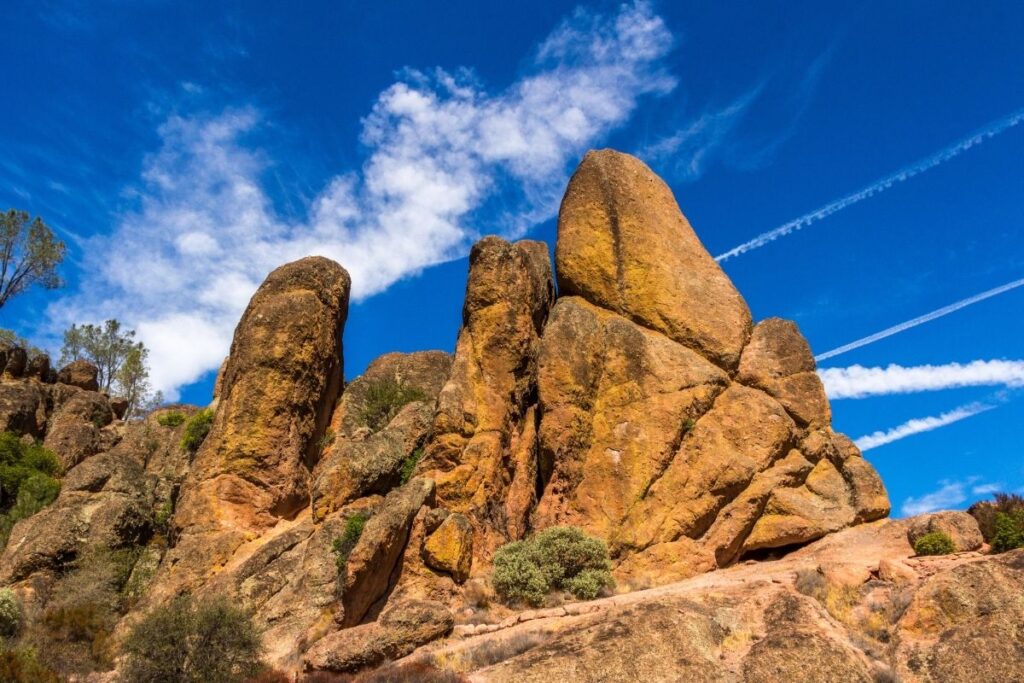
Virgin Islands National Park
Virgin Islands National Park is the closest park in size to Chiricahua, but it’s an island National Park with a significant water component. Given the obvious differences in the units, I don’t feel it’s fair to compare these two parks.
Indiana Dunes National Park
Indiana Dunes National Park is slightly larger than Chiricahua and is a more urban/part-water National Park. Despite its urban location, it has about 50 miles of hiking/walking trails. Indiana Dunes also sees significant visitation due to its location as a popular beach spot near Chicago.
Indiana Dunes has an average visitor length of 3 hours, compared to Chiricahua’s of 6.5 hours.
National Park of American Samoa
American Samoa is a different National Park due to its location, Samoan culture, and land ownership practices. Despite being 30% smaller, the park has about 30 miles of hiking trails, but like the Virgin Islands, it’s not really a good comparison to make between American Samoa and Chirichaua.
Current Situation of the National System
The National Park System has a couple of major ongoing problems. I could write a book on all those issues, but honestly, we can boil the majority of those problems down to one thing—money. NPS doesn’t have enough of it and hasn’t for a long time.
Yes, I know every government agency claims it is underfunded, and most people don’t want to pay more in taxes or fees within the parks. In the chart below, you can see that the number of NPS units and visitation has grown by 27% and 23%, respectively, since 1985. In contrast, the budget counting for inflation has only grown by 20%.
| Year | 1985 | 2023 | Increase |
|---|---|---|---|
| National Park Units | 3371 | 428 | 27% |
| Annual Visitation2 | 263,441,808 | 325,498,646 | 23% |
| NPS Budget (counting for inflation) | $2.99 billion3 | $3.6 billion4 | 20% |
The number of NPS units has outgrown its budget by 7% from 1985 to 2023. If we do a straight-line estimate, that means that NPS has a total budget shortfall of $3.8 billion. But that straight-line estimate doesn’t paint the full picture.
Each new unit comes with its own unique sets of needs, but there is some general infrastructure and staffing needs that are the same across all NPS units, such as visitor services and staff. So, with each new unit, NPS needs more staff and gains infrastructure that both needs to be built and maintained.
On top of that, park visitation has increased in many units, increasing the infrastructure and staffing needs of exiting parks. At the same time, much of the existing infrastructure is aging and is in need of replacement or major repairs and doesn’t meet modern life safety and building codes.
NPS’s budget woes are a vicious cycle that has resulted in NPS developing $23.3 BILLION in deferred maintenance and repair. This isn’t sustainable, and we are seeing the results in understaffed units with operating limited hours, parks with developed areas that have been inaccessible for ten-plus years, and just general neglect that allow things to deteriorate further.
- National Park Service Annual Report 1985 ↩︎
- NPS Annual Visitation ↩︎
- NPS Budget for 1985 was found on Page 430 and was $1,055,081,000, and the US Inflation Calculator was used to determine the 2023 equivalent value ↩︎
- NPS’s Budget for 2023 was $3.8 billion on page 93 ↩︎
Should Chiricahua National Monument be a National Park?
As I said at the start of this article, Chiricahua has challenged my stance on no more National Parks, right now. This hasn’t changed after my deep dive into Chiricahua’s infrastructure and comparing it to other parks.
I feel like the monument is decently positioned to absorb a 20-50% increase from 2023 visitation levels. The infrastructure needs some upgrades and repairs, but it’s manageable. The real problem is that the National Park System doesn’t need another park to see a big bounce and visitors, which will just further stretch already limited resources.
I agree with Dr. Gil Lusk’s 2019 Op-Ed – The Future Or Extinction Of Our National Park System. Dr. Lusk spent three decades with the National Park Service, including stints as park superintendent of Glacier National Park and Big Bend National Park has argued that to save the National Park System, we should close parks for the time being to free up funding to help save the system. While NPS has gotten a little bit of funding to help with the deferred maintenance but it has been too little too slow.
If we could get the funding situation sorted out, I’d seriously consider supporting Chiricahua’s bid to become a National Park. Chiricahua is a little small and underdeveloped to be a National Park, in my opinion. I like my National Parks to have three full days of things to do, and at best, Chirichaua has two days worth of hiking and sightseeing. But Chiricahua is surrounded by National Forest land, and it could be worthwhile to expand the monument as it is created using some of that forest land and maybe add a few more hiking options.
Jennifer Melroy
Hi, I'm Jennifer!
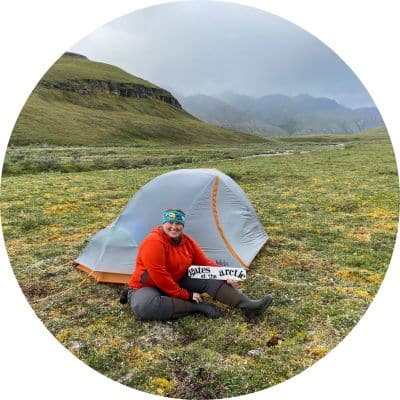
Welcome to the wonderful world of National Parks. I'm here to help you plan your NEXT amazing adventure through the United States National Parks and beyond. I want the national parks to be accessible to all.
I live in Tennessee, and when I'm home, you can find me hiking in the Smokies and the Cumberland Plateau.
58/63 National Parks
250+/423 National Park Units
Want to know more? Start Here.
ACKNOWLEDGEMENT OF LAND
On this site, we promote travel to the United States and beyond that are the traditional lands of Indigenous and First Nations peoples.
With respect, I make a formal land acknowledgment, extending my appreciation and respect to these lands’ past and present people.
To learn more about the people who call these lands home, I invite you to explore Native Land.
DISCLAIMER
National Park Obsessed assumes no responsibility or liability for any errors or omissions in the content of this site (NationalParkObsessed.com). The information contained in this site is provided with no guarantees of completeness, accuracy, usefulness or timeliness. You are encouraged to conduct your own due diligence before acting on the information provided on this site and should not rely on the opinions expressed here.
There is an inherent risk in all outdoor recreation activities, the reader assumes all responsibility for their own personal safety.
DISCLOSURE
We are a participant in the Amazon Services LLC Associates Program, an affiliate program designed to provide a means for us to earn fees by linking to Amazon.com and affiliated sites.
Privacy Policy • About Us • Contact
Select stock photography provided depositphotos
Copyright ©2023 National Park Obsessed, LLC
